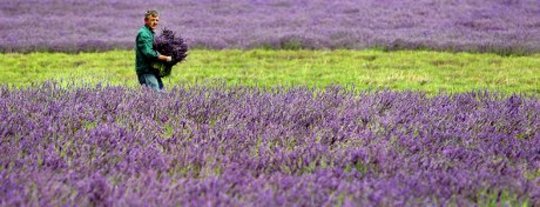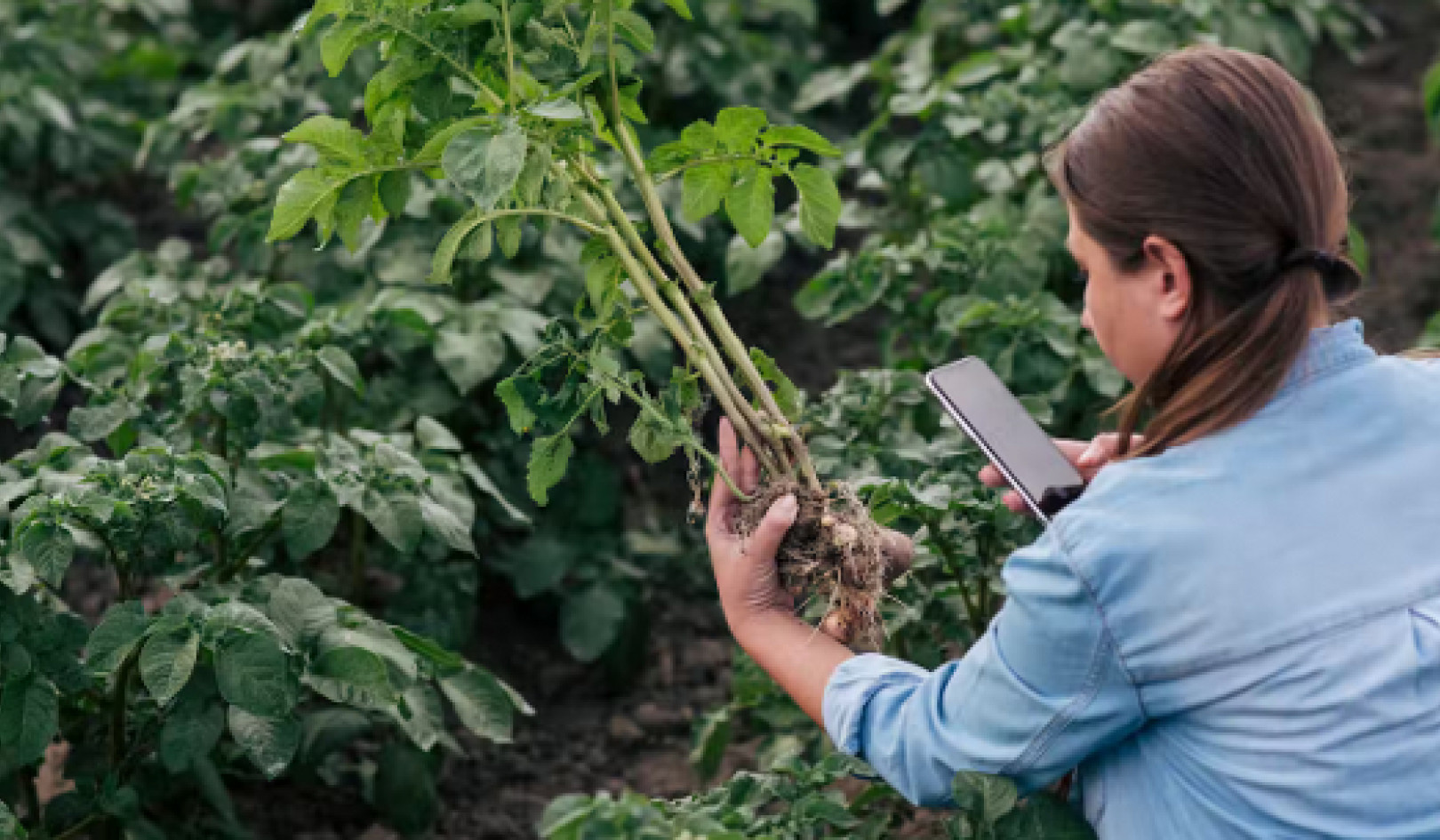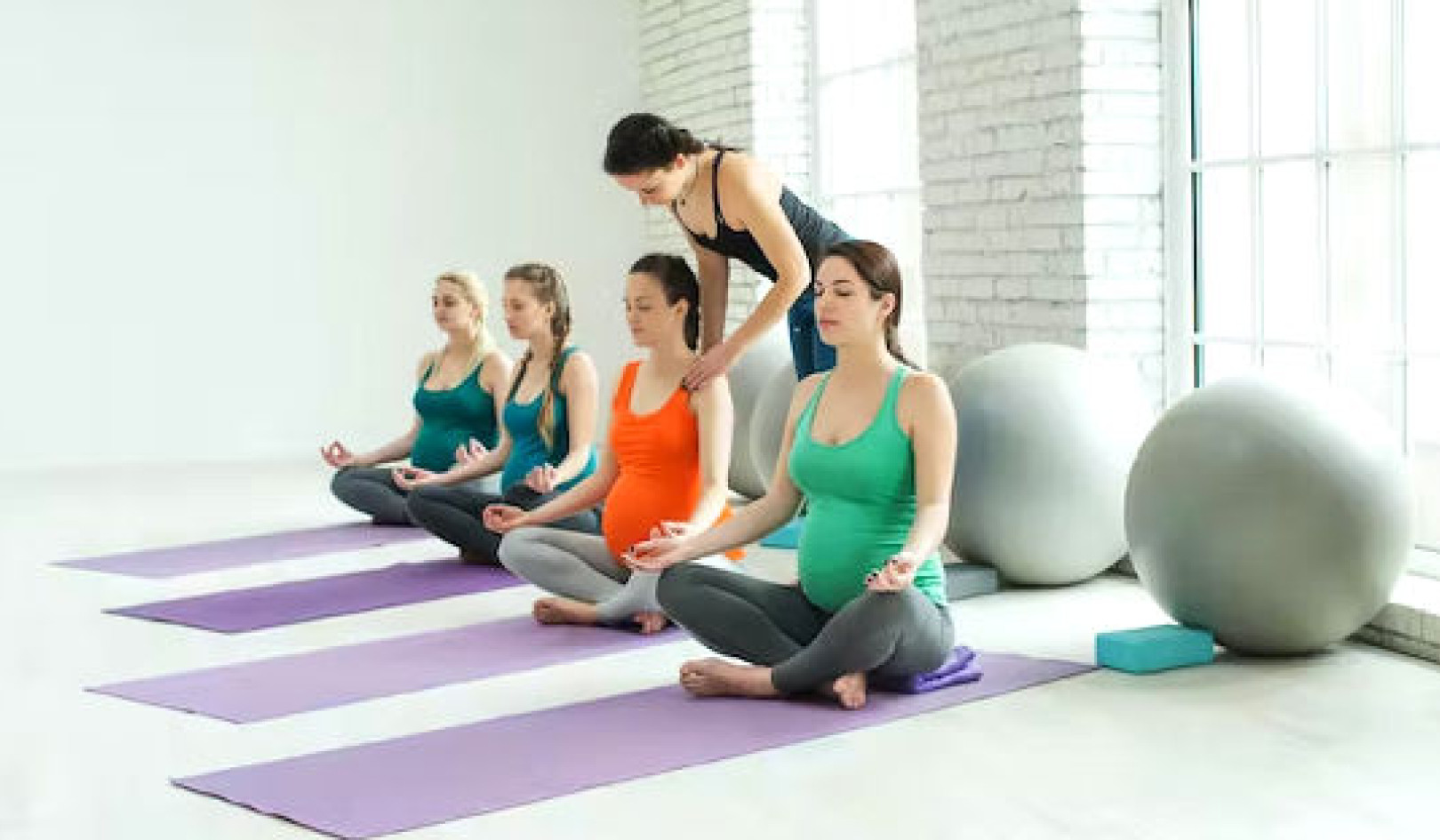
Lavandula angustifolia, known as true lavender or English lavender, was until recently considered the hardiest and most fragrant species. It is a shrubby, semi-evergreen perennial with long narrow leaves, which explains its species name, angustifolia, meaning “narrow leaf.”
The common and genus names, lavender and Lavandula, were probably derived from the Latin word lavare, meaning “to wash.” In Medieval Europe the washing women were known as lavenders.
Aromatic English Lavender
English lavender, grown in farms throughout England, is arguably the most aromatic, possessing the greatest delicacy of scent and commanding the highest price. These farms were once extensive in England, but with the growth and expansion of London, coupled with the loss of land to food crops during World War I, the cultivation of lavender has diminished.
Commercial growers now prefer a class of hybrids called the Intermediates, or Lavandins. A cross between L. angustifolia and L. spica, they produce the greatest yields of volatile oils, also known as essential oils, used in aromatherapy and cosmetics. Lavandin essential oil, however, is not as valuable as English lavender, and the seed is sterile.
Where & How Lavender Grows
The average English lavender is long-lived, having a flowering life of about ten years, with some plants living close to twenty years. It is considered a sustainable crop because it requires little or no fertilizer and pesticides.
Lavender grows best in dry, well-drained, sandy soil in full sun. Although it is relatively disease and pest free, lavender is sensitive to root rot and requires good air circulation and excellent drainage. It likes to be cut back after blooming in order to promote compactness and vigor for the following season. In the cold winters of northern climates, lavender dies back completely.
To maintain crop purity, lavender is best propagated from softwood cuttings; plants grown from seed produce too much variability and are not true to type. While lavender is widely grown in gardens all over the world, garden escapees are found growing in the wild outside of its native habitat.
Properties and Benefits of Lavender
Like most members of the mint family, lavender produces lots of volatile oils, which are responsible for the healing properties and distinctive scent when cut or crushed. The beauty, scent, and healing properties of lavender qualify it as the “queen of the herbs” for the herb garden.
Cherished by beekeepers, lavender’s abundant nectar yields a high-quality honey. The symbiotic relationship between lavender and honeybees is critical, as essential or volatile oil production increases with pollination. Pollinated flowers produce significantly more volatile oils.
Lavender flowers, cultivated extensively in France, Italy, and England, are primarily distilled for their essential oils. As the demand for lavender essential oil increases, countries like China and Australia are getting in on the action by boosting their production. One acre of L. angustifolia can produce up to 1,800 pounds of dried flowers, which results in about two gallons of essential oil. Oil yields can vary considerably from season to season.
Historic Use of Lavender
 The historic use of lavender has been well documented for over two thousand years. The Egyptians, Phoenicians, and Arabians used it as a perfume and in the mummification process. (Lavender oil is still used in the embalming process, mostly in third-world countries, and this use is increasing.) It was used in Spain in landscaping, in Iran to treat burns, in England to scent linens and repel insects, and in Rome for scented baths.
The historic use of lavender has been well documented for over two thousand years. The Egyptians, Phoenicians, and Arabians used it as a perfume and in the mummification process. (Lavender oil is still used in the embalming process, mostly in third-world countries, and this use is increasing.) It was used in Spain in landscaping, in Iran to treat burns, in England to scent linens and repel insects, and in Rome for scented baths.
It is so effective as an antimicrobial that glove makers in sixteenth-century France, who were licensed to perfume their wares with lavender, didn’t contract cholera. It is also an effective insect repellent. Seventeenth-century grave robbers, who washed in a formulation containing lavender known as “Thieves,” rarely contracted the deadly plague that was caused by fleas.
Aromatherapy with Lavender Essential Oils
Lavender essential oil is the one most widely used in aromatherapy, a healing technique that uses essential oils to relieve physical and psychological imbalances. It is one of the few essential oils that can be applied “neat,” or undiluted, directly on the skin. The essential oil is steam distilled, using the whole plant when in flower. The result is a versatile oil with a pleasant aroma, used to make a wide variety of products, such as lotions, creams, body butters, massage oils, bath oils, bath salts, soaps, shampoos, deodorants, salves, balms, and air fresheners.
Because steam distillation is an expensive process that requires vast amounts of fresh plant matter, many small-scale producers use floral waters, or hydrosols, instead of pure essential oils. Hydrosols are by-products of the steam distillation process that produces essential oils. Less concentrated that essential oils, floral waters contain many of the same qualities but in a milder form.
Medicinal Properties of Lavender
The medicinal properties of lavender are many. Its herbal actions are antibacterial, antidepressant, antispasmodic, carminative, emmenagogue, hypotensive, nervine, and rubefacient. Lavender infusions (water-based extracts), essential oils, and hydrosols are used to treat burns, skin inflammations, minor abrasions, and insect bites. It increases circulation to the skin and may help relieve rheumatic pain.
Herbal tea made from lavender leaves and flowers relaxes and restores the nervous system to promote sleep and relieve tension, anxiety, and stress-related headaches, especially when the cause is overstimulation and nervous exhaustion. It is also beneficial in the treatment of digestive disorders and depression. The aroma of lavender is relaxing and uplifting, and it acts as a mild sedative for the central nervous system.
While women may be especially fond of lavender, the attractiveness of this plant is not limited to just women, however, for it is the receptive frequency of the feminine that attracts both men and women alike. While lavender may have been much sought after by Victorian royalty and grown in the garden of many a queen, the love of lavender is not limited to status, era, or region. The magic and power of this herb continue to unfold in our midst.
(subtitles by InnerSelf)
Reprinted with permission of the publisher,
Bear & Company, an imprint of Inner Traditions Inc.
©2011. www.innertraditions.com
This article has been adapted with permission from the book:
Wisdom of the Plant Devas: Herbal Medicine for a New Earth
by Thea Summer Deer.
 Thea Summer Deer reveals a new dimension of herbal medicine, one where the plant’s spirit is consulted for guidance and healing beyond the physical. Exploring herbal medicine from an energetic perspective, she reveals that by communing with the deva of a plant, we can call on the plant’s physical, psychological, and spiritual medicine and guidance -- without ingesting it or even being in its presence.
Thea Summer Deer reveals a new dimension of herbal medicine, one where the plant’s spirit is consulted for guidance and healing beyond the physical. Exploring herbal medicine from an energetic perspective, she reveals that by communing with the deva of a plant, we can call on the plant’s physical, psychological, and spiritual medicine and guidance -- without ingesting it or even being in its presence.
Click here for more info or to order this book on Amazon.
 About the Author
About the Author
Thea Summer Deer is a clinical herbalist, singer-songwriter, midwife, and childbirth educator. As a child she learned how to shoot a bow, canoe, weave and gather medicinal herbs. Raised with the Seminole Indians in South Florida until the age of eight, she lives surrounded by Cherokee ancestral land in the Appalachian Mountains of western North Carolina. Visit her website at www.theasummerdeer.com




























